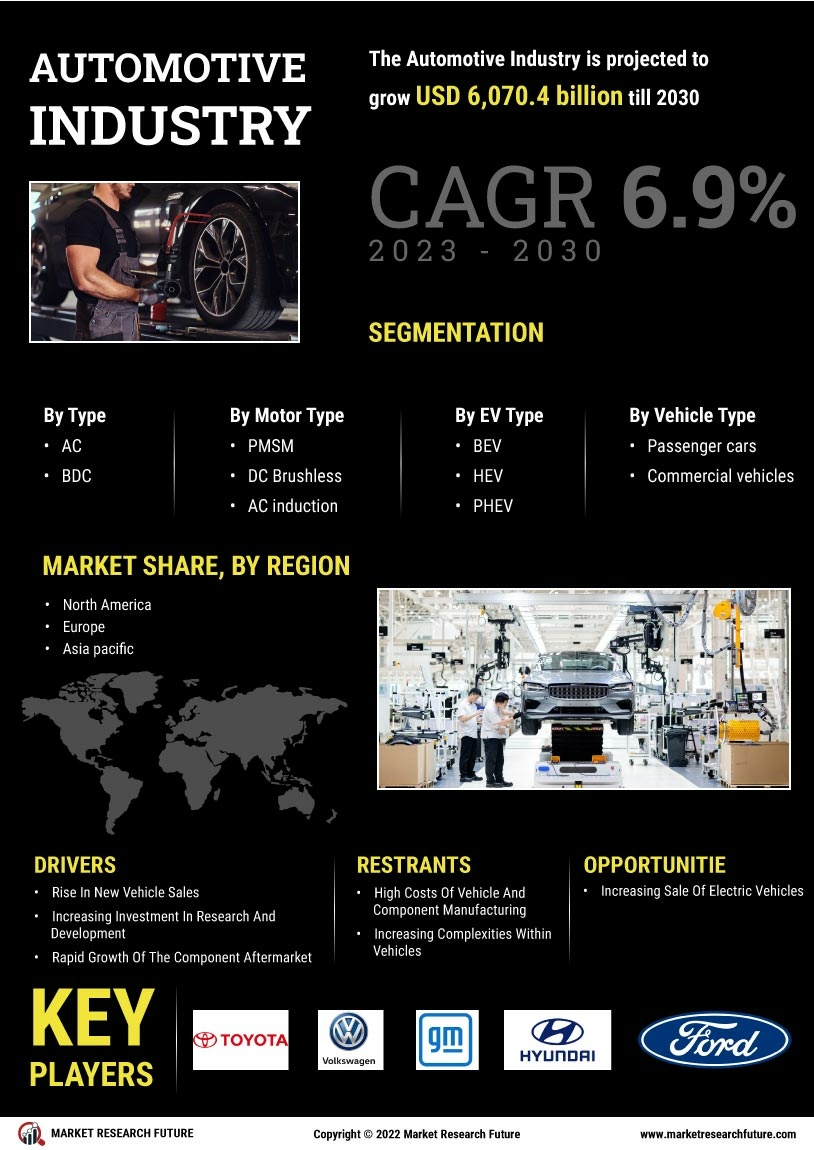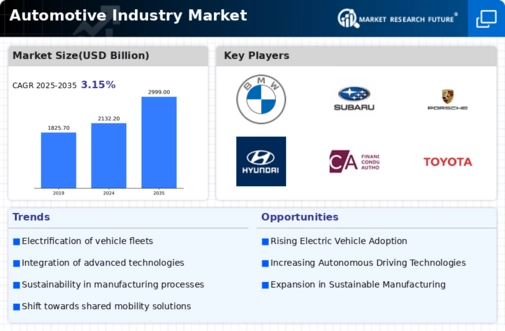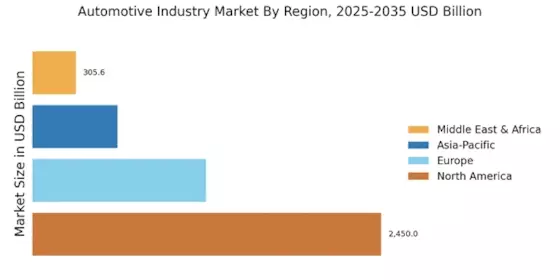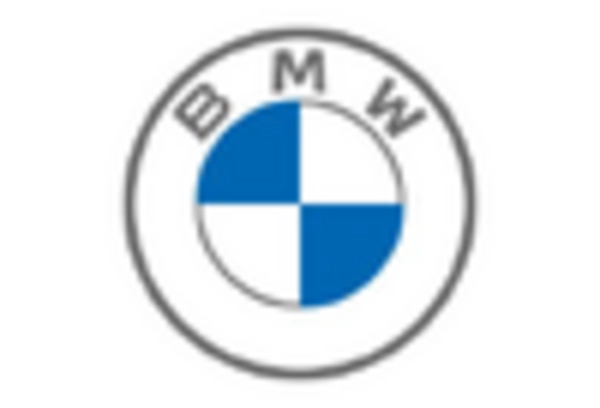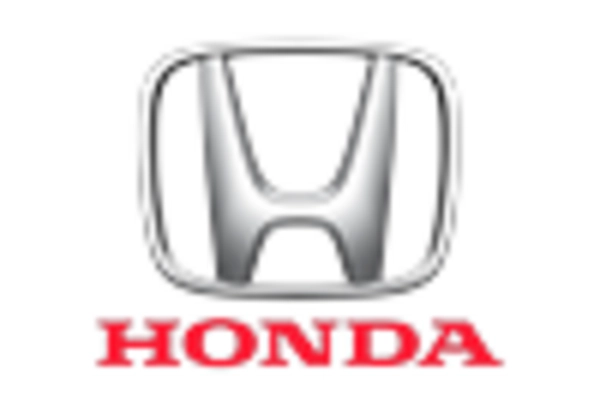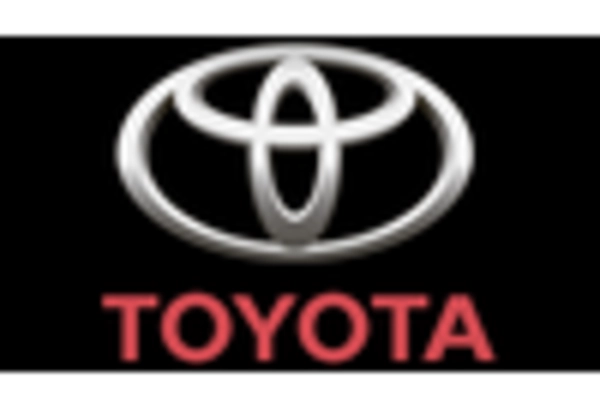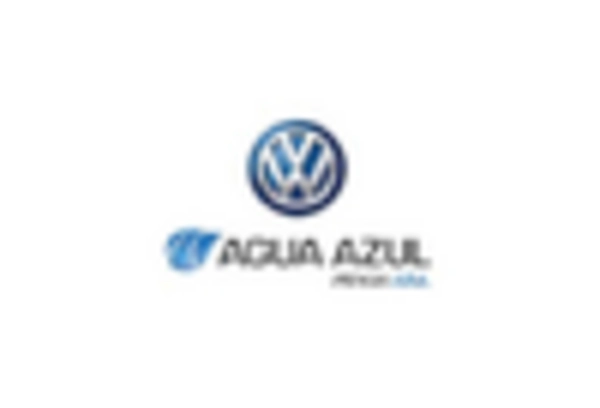Sustainability Initiatives
The US automotive industry 12880 is increasingly influenced by sustainability initiatives aimed at reducing carbon emissions and promoting eco-friendly practices. Government regulations, such as the Corporate Average Fuel Economy (CAFE) standards, mandate automakers to enhance fuel efficiency and lower greenhouse gas emissions. As a result, manufacturers are investing heavily in research and development of alternative fuel vehicles, including hybrids and electric vehicles. In 2025, the market for electric vehicles in the US automotive industry 12880 is projected to reach approximately 25% of total vehicle sales, reflecting a significant shift towards sustainable transportation. This trend not only aligns with consumer preferences for greener options but also positions companies favorably in a competitive market that increasingly values environmental responsibility.
Technological Advancements
Technological advancements play a pivotal role in shaping the US automotive industry 12880. Innovations in manufacturing processes, such as automation and robotics, have enhanced production efficiency and reduced costs. Furthermore, the integration of advanced driver-assistance systems (ADAS) is becoming commonplace, improving vehicle safety and performance. According to the National Highway Traffic Safety Administration, vehicles equipped with ADAS have shown a reduction in accident rates by up to 30%. This technological evolution is not merely a trend; it is a fundamental shift that is likely to redefine consumer expectations and industry standards in the coming years. As automakers continue to embrace cutting-edge technologies, the US automotive industry 12880 is poised for transformative growth.
Global Supply Chain Dynamics
Global supply chain dynamics significantly impact the US automotive industry 12880, particularly in the context of sourcing materials and components. The reliance on international suppliers for critical parts, such as semiconductors, has exposed vulnerabilities in the supply chain. In 2025, it is projected that disruptions in global supply chains could lead to production delays and increased costs for automakers. This situation has prompted companies to explore local sourcing options and invest in domestic manufacturing capabilities. As a result, the US automotive industry 12880 is likely to experience a shift towards more resilient supply chain strategies, which may enhance operational efficiency and reduce dependency on foreign suppliers.
Consumer Preferences for Connectivity
Consumer preferences for connectivity and smart features are driving significant changes in the US automotive industry 12880. Modern consumers increasingly demand vehicles equipped with advanced infotainment systems, seamless smartphone integration, and real-time navigation capabilities. A survey conducted by the Consumer Technology Association indicates that over 70% of car buyers prioritize connectivity features when selecting a vehicle. This shift is prompting automakers to invest in developing in-car technologies that enhance user experience and safety. As a result, the US automotive industry 12880 is witnessing a surge in partnerships with tech companies to integrate innovative solutions, thereby creating a more connected and interactive driving experience.
Regulatory Compliance and Safety Standards
Regulatory compliance and safety standards are critical drivers in the US automotive industry 12880. The National Highway Traffic Safety Administration (NHTSA) enforces stringent safety regulations that manufacturers must adhere to, ensuring that vehicles meet specific safety criteria. This regulatory landscape compels automakers to prioritize safety features, such as airbags, anti-lock braking systems, and electronic stability control. In 2025, it is estimated that compliance costs could account for up to 15% of the total production costs in the US automotive industry 12880. Consequently, manufacturers are increasingly focusing on innovation to not only meet these standards but also to differentiate their products in a competitive market.
